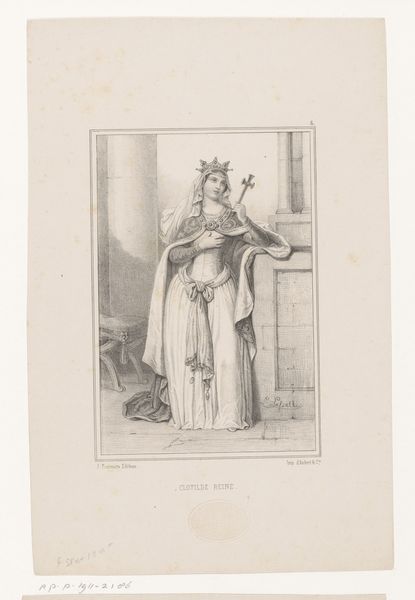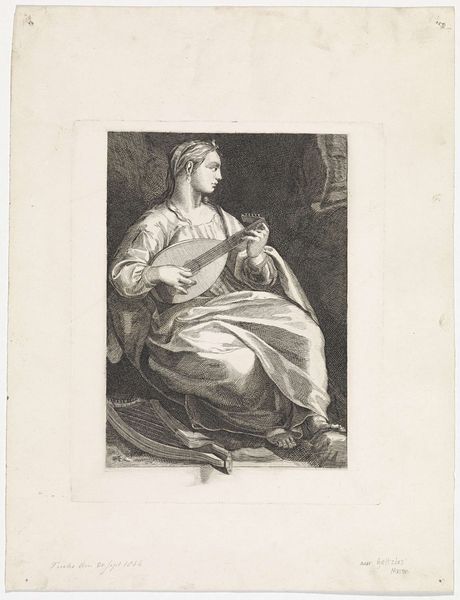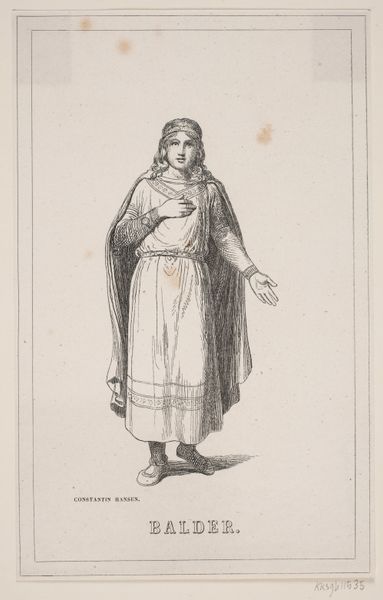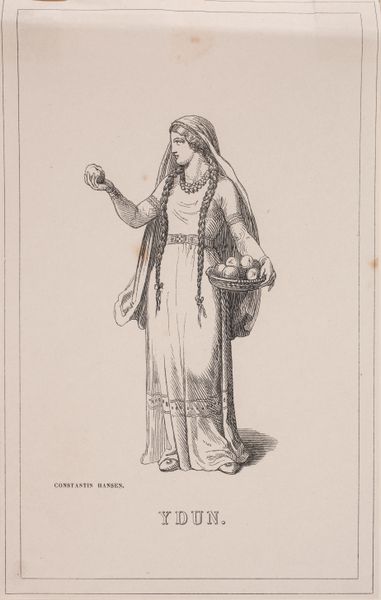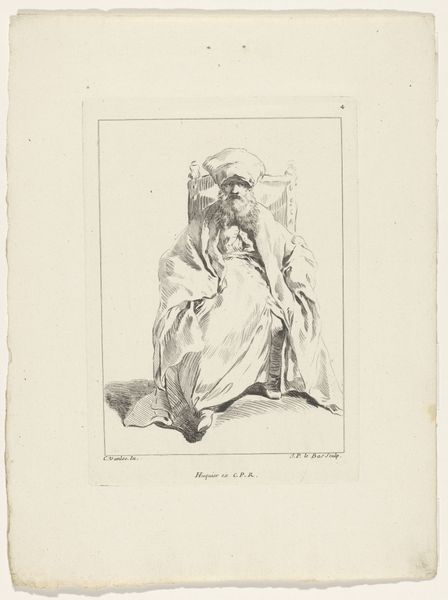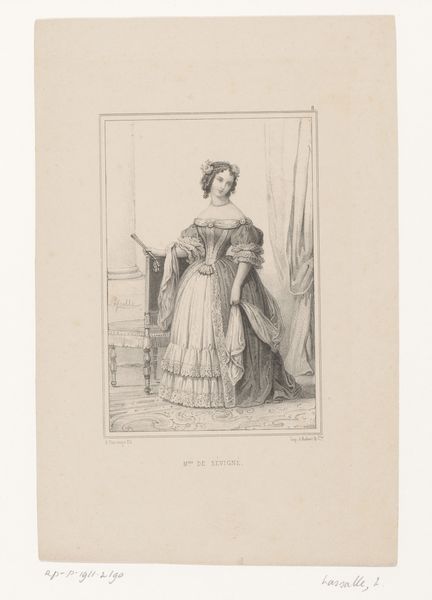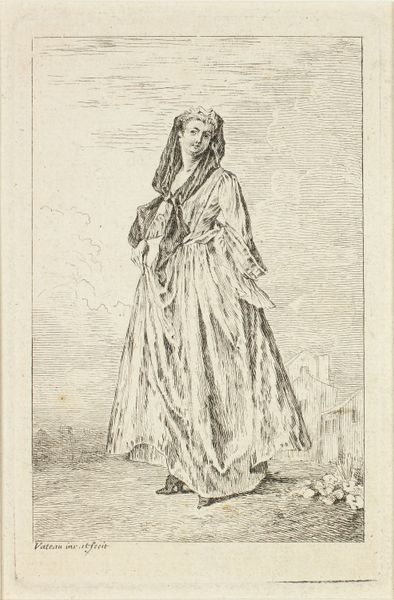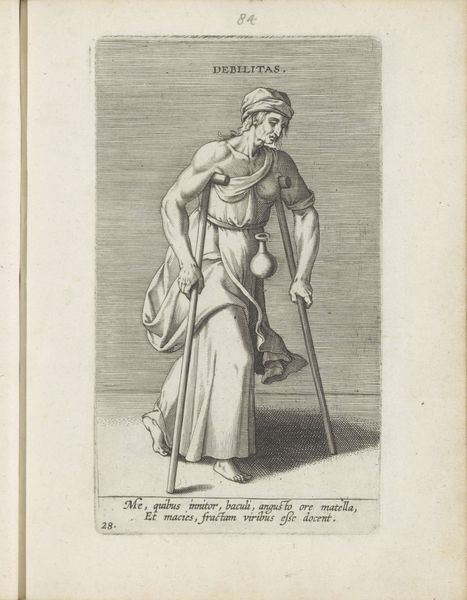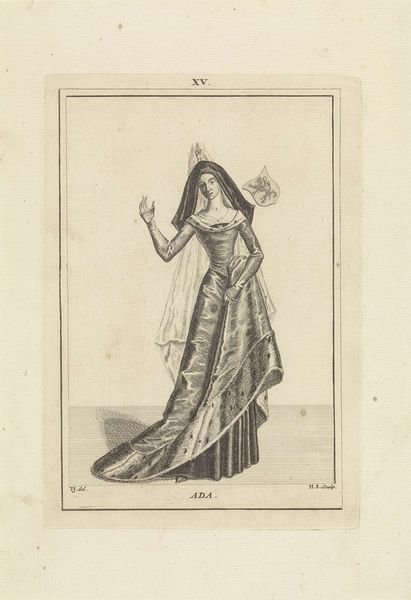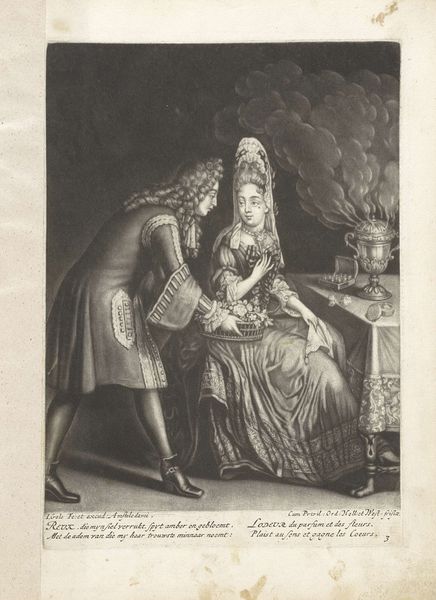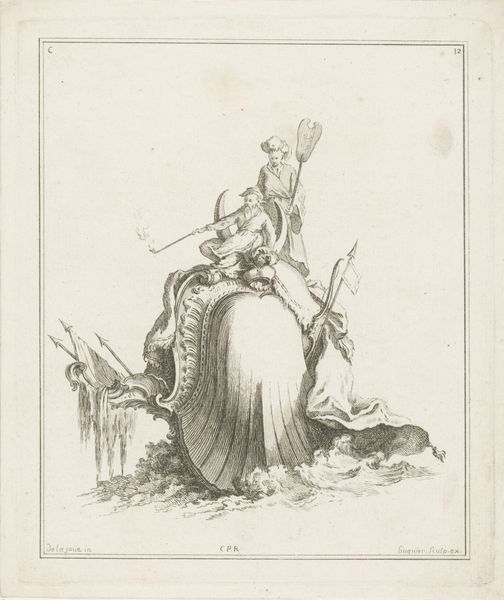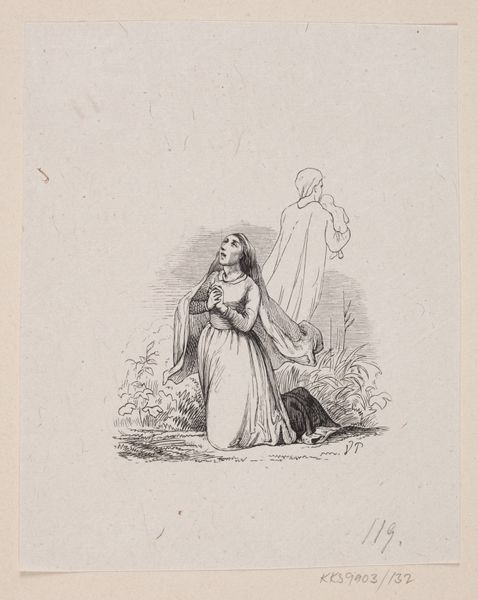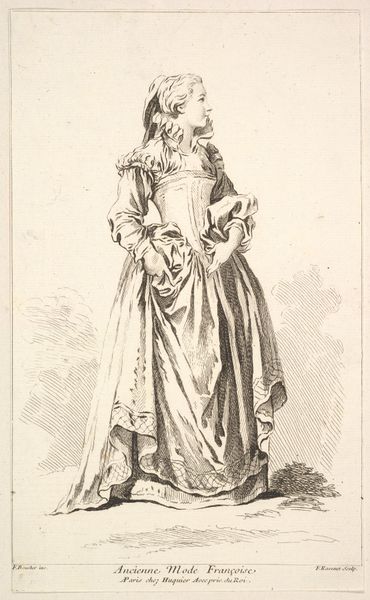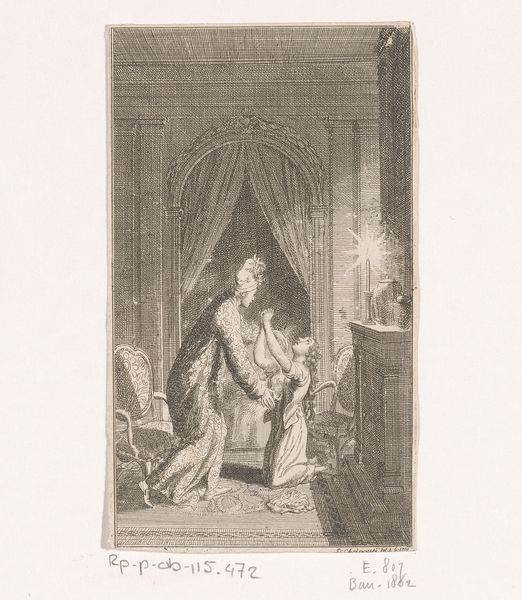
print, woodcut, engraving
#
portrait
# print
#
figuration
#
woodcut
#
history-painting
#
engraving
Dimensions: 202 mm (height) x 127 mm (width) (bladmaal)
Editor: Here we have "Friga," a print by Axel Theodor Kittendorff, dating from 1813 to 1872, currently housed at the SMK in Copenhagen. It's a woodcut engraving, and something about the figure's posture gives the impression of weariness or pensiveness. What strikes you about this piece? Curator: It’s a captivating depiction. Considering the era, this representation of Friga, or Freya, becomes particularly interesting when viewed through a feminist lens. Kittendorff chooses to portray a Norse goddess—a figure of power and agency within her mythology—but situates her in a domestic scene, almost melancholic. It invites us to question: What does it mean to confine a goddess, a symbol of female strength, within the restrictive narratives of 19th-century domesticity? Editor: So, you're seeing a tension between the mythological figure and the artist's interpretation within a specific social context? Curator: Precisely. How does the artist engage with and perhaps even subvert, or problematically reinforce, the patriarchal structures of the time? Look at her garments, the patterns—can we decode symbols that embed gendered codes? Also consider, how would a contemporary artist approach this subject? Editor: That’s a fascinating angle. I hadn't considered the ways in which even historical depictions can reflect contemporary power dynamics and expectations surrounding gender. I suppose, the questions it poses are quite relevant. Curator: Absolutely. By exploring those power dynamics, we unlock further understandings about how identities are constructed and contested throughout history. Understanding these dialogues informs us how seemingly simple images contributed, and still contribute, to gender constructs. Editor: This reframes my whole view of this seemingly simple piece! Thanks for sharing these important nuances! Curator: My pleasure! It’s about recognizing that art is not created in a vacuum; instead, it converses with and actively shapes the world around it.
Comments
No comments
Be the first to comment and join the conversation on the ultimate creative platform.
